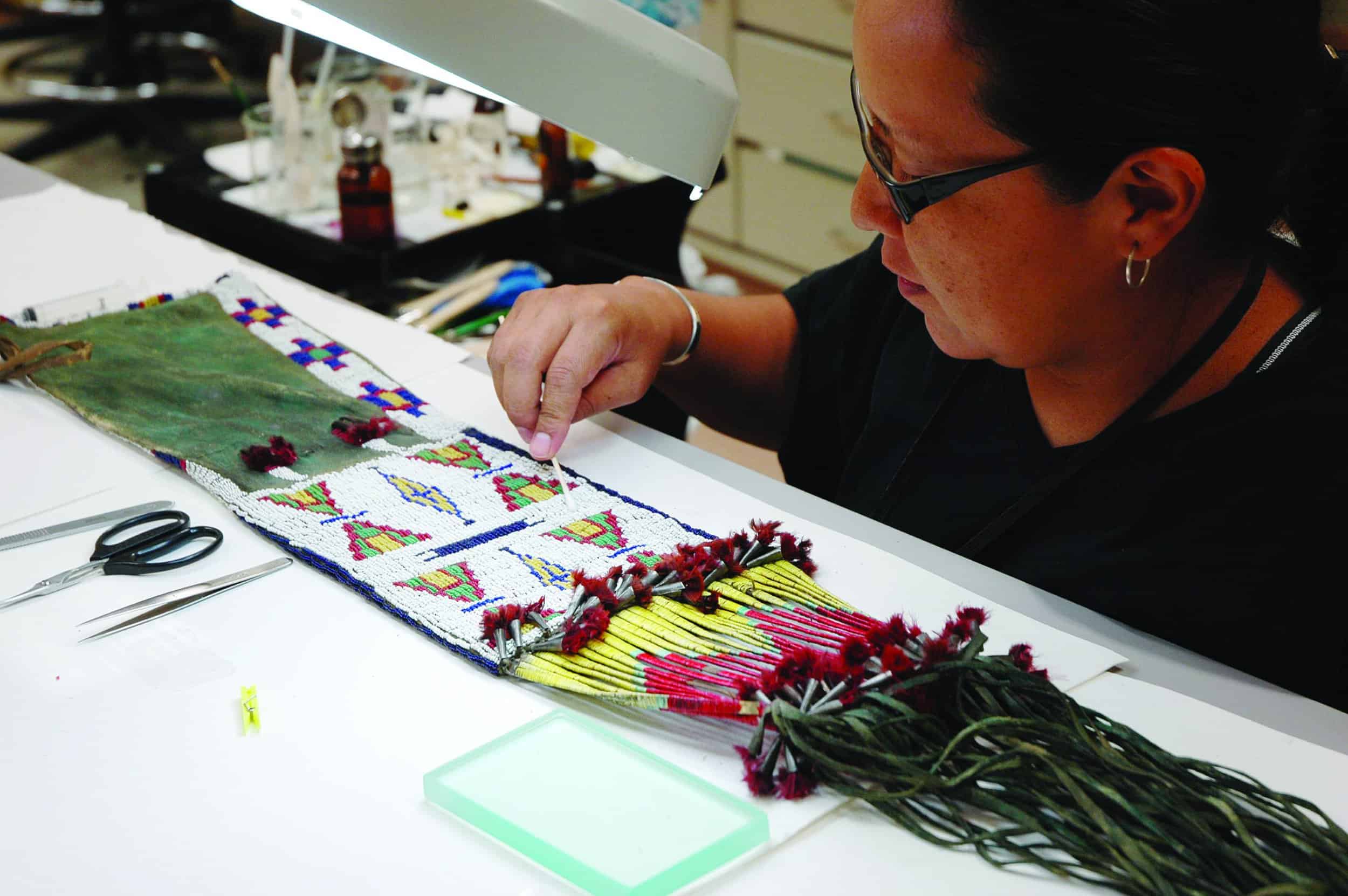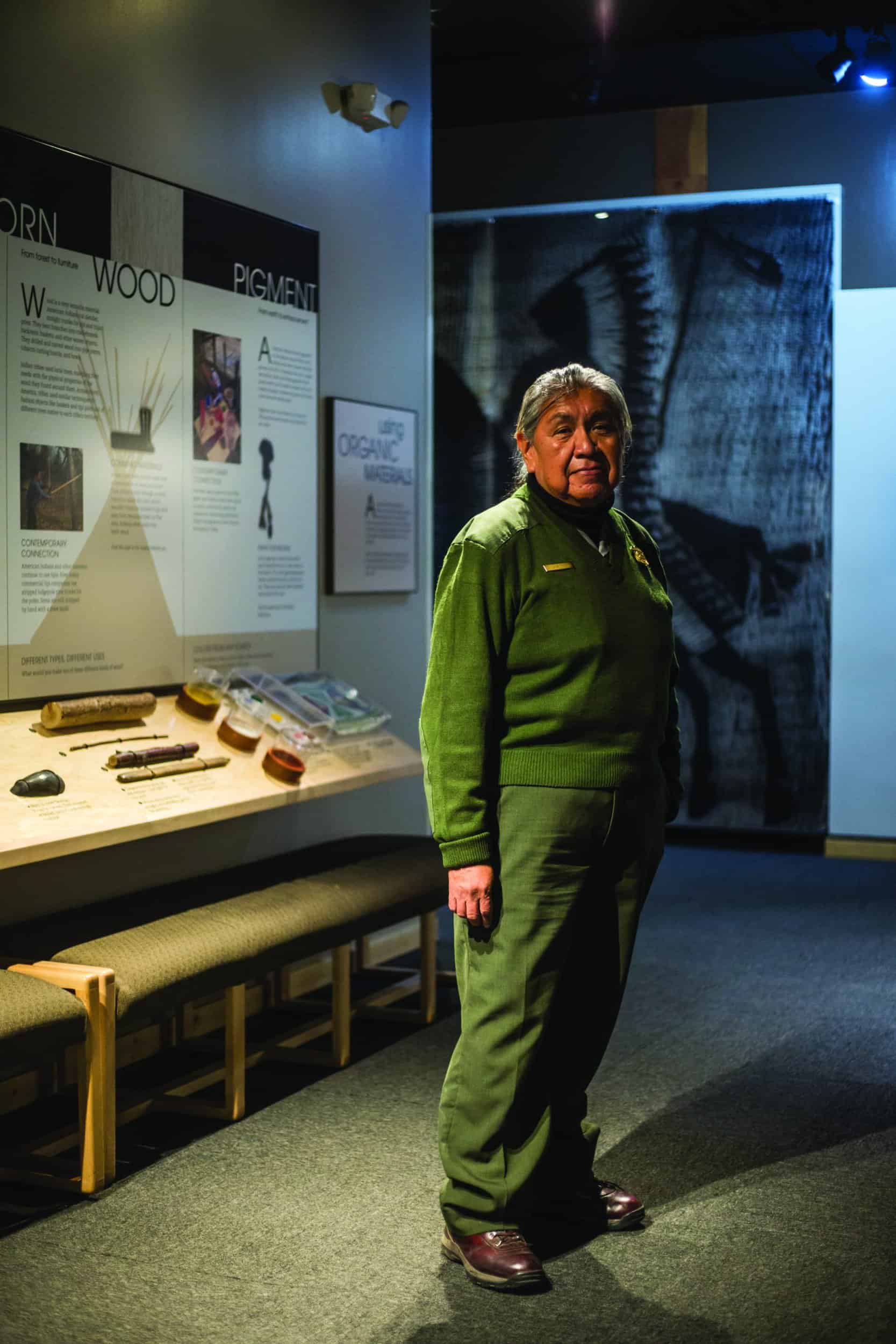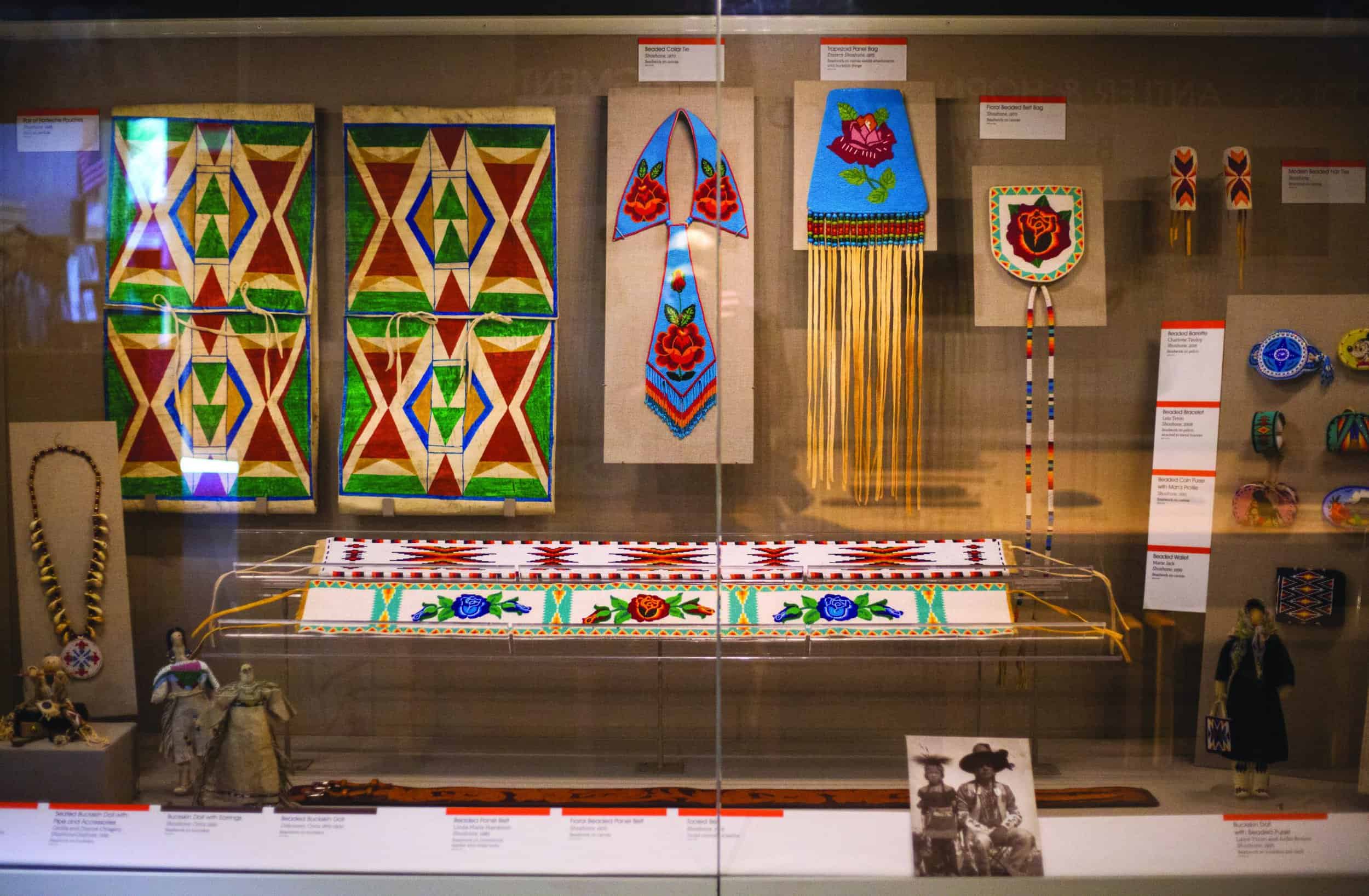Read The
Current Issue
PHOTO BY RYAN DORGAN
Grand Teton National Park’s Colter Bay Indian Artist Museum closed a decade ago, but the park still hosts the American Indian Guest Artist Program and displays portions of the museum’s collection at the Colter Bay and Craig Thomas Visitor Centers.
// By Dina Mishev

There are twenty-four Native American tribes associated with Grand Teton National Park (GTNP), from the Apache Tribe of Oklahoma to the Eastern Shoshone Tribe and the Northern Arapahoe Tribe, both of the Wind River Reservation, Wyoming, and the Shoshone-Bannock Tribes of the Fort Hall Reservation, Idaho. These tribes are tied to the lands that are today GTNP for a variety of reasons—some having seasonally lived and hunted here—and others passing through the area as they were forced from their ancestral lands onto reservations by the U.S. government. “It is important that we understand the relationship between Native Americans and this land,” says Bridgette Guild, GTNP museum curator.
For four decades, GTNP was home to the Colter Bay Indian Arts Museum, which displayed the David T. Vernon Collection, a world-class assemblage that included art and artifacts from one hundred tribes. That museum was closed in 2011 so the collection, half of which had been on continuous display since the museum opened in 1972, could be conserved. This meticulous conservation work was finished in 2020, but, to ensure the collection’s long-term preservation, now only about one hundred items from it at a time are displayed. (The rest are in storage.)
The current exhibit, Living Traditions, Reflections on the Past at Colter Bay, is divided between the Colter Bay Visitor Center and the Craig Thomas Discovery and Visitor Center. It includes thirty-one items from the Vernon Collection and forty-seven items on loan from the private collection of Laine Thom, a former park ranger (interpretation) of Shoshone, Goshute, and Paiute descent, and an artist. “For me to loan pieces to the park was to allow people to interpret the culture’s past, present, and future,” says Thom. Living Traditions will be on display through this summer, although access could be limited due to Covid-19.
Colter Bay is also home to the long-running American Indian Guest Artist Program, which allows Native artists to demonstrate, talk about, and sell their work over week-long residencies from late May through mid September. It is important that we understand the relationship between Native Americans and this land.”
—Bridgette Guild, GTNP Museum Curator
Artists in Action
Many guest artists have been coming to Colter Bay for years.
Colter Bay started hosting Indian artists from across the country in the 1970s. This program was, and remains, as popular with guest artists as with park visitors. “The park has a roster of artists who love to come back,” says Clyde Hall, an artist of Shoshone/Metis descent who has been a guest artist at Colter Bay annually since the early 1980s. Andrea Two Bulls, an Oglala Lakota artist born, raised, and still living on the Pine Ridge Indian Reservation, first came to Colter Bay when she was ten or eleven and her father, acrylic painter Edward Two Bulls, was a guest artist. “We loved it in the park,” she says. For more than twenty years, Ms. Two Bulls has been a guest artist herself, sharing her painting, photography, and jewelry. “Buses come with people from across the U.S. and from countries like Japan, Germany, and England. Some people would buy our work and we’d know where it went in the world and it would have greater meaning for them after talking to us about it,” she says. Hall says the program “gave me the opportunity to inform people about what I do—beading and quill work—and we’d meet people who had never met an Indian before. You were the first Native American they talked to. We could familiarize them with a little bit of Native culture and our art.”
Originally part of the Colter Bay Indian Arts Museum, the program changed when the museum closed, but not how you might guess. “People came to the museum because it was world famous. They were looking for Native American art and artists,” Hall says. “Nowadays, people come upon us cold. They stumble into the gift shop and stumble onto us—here are these Native American artists demonstrating and selling their craft work. They’re delightfully surprised.”
The residencies are informal. “We’re just working, and people can talk to us,” Hall says. For the full roster of this summer’s Indian guest artists, go to nps.gov/grte/planyourvisit. Hall is taking this year off because of Covid-19, but look for Andrea Two Bulls and also Thom. Thom was a constant presence at the guest artist program because of his position as a ranger (interpretation) at Colter Bay, but this will only be his second time as a guest artist. (In 1981, he took the summer off from the NPS and was a guest artist. He’s able to be a guest artist now because he retired from the NPS last year.)
The Vernon Collection
An unlikely, expansive collection that brought Indian art and artifacts to GTNP.
David T. Vernon’s collection of Native American art and artifacts started with arrowheads found on a Lake Michigan beach. It was the early twentieth century, Vernon was a Boy Scout, and arrowheads were cool. He began combing beaches regularly looking for more. By the time he was a teen, his interest in arrowheads had widened to include the culture of the people who had made them. In high school, Vernon worked on dude ranches in Wyoming and Montana and came to know the Crow and Blackfoot tribes. He bought as much work from their artists as he could afford. After establishing a career as an illustrator, Vernon continued collecting and became known as an expert collector, particularly of the Reservation Period (1875–1900). By the 1960s, he had one of the finest collections of Indian art and artifacts in the country; it included pieces from one hundred tribes.
Vernon’s goal was to one day open his own museum, with his collection as the main exhibit, but he was not able to make this happen. Wanting his collection to be shared, in the late 1960s he sold it to Laurance S. Rockefeller, then president of the Jackson Hole Preserve, an organization committed to the preservation of the history of the West, on the condition that it be displayed in a museum.
In 1972, the Colter Bay Indian Arts Museum opened to exhibit Vernon’s collection, which Rockefeller first loaned to the park before donating it in 1976. Google Arts & Culture includes two online exhibits about the Vernon Collection. Find them by searching for “David T. Vernon” at artsandculture.google.com.
Hidden Away
Putting a collection into long-term storage.
For forty years, more than half of the 1,428 pieces in the David T. Vernon collection of Indian art and artifacts were on continuous display at the Colter Bay Indian Arts Museum. Starting in 2005, pieces that were not on display went through meticulous conservation work at the Western Archaeological Conservation Center (WACC) in Tucson, Arizona. The museum was closed in 2011 so that the pieces on display could go through the same conservation process. By 2020, the 1,357 items in the collection that required conservation work were finished. “The whole point is to slow deterioration and minimize loss from the collection,” Guild says. “Thanks to this conservation work, the objects are going to exceed all expectations of how long they will last.” To ensure they continue to last, at any given time the majority of the collection will be in storage. JH








